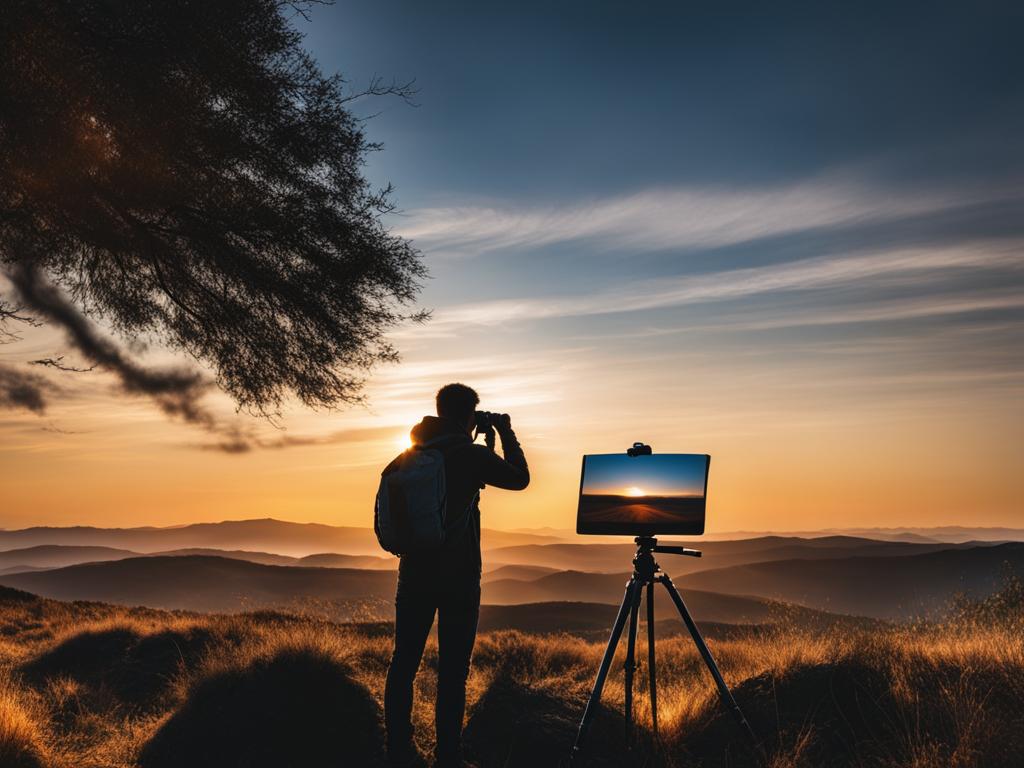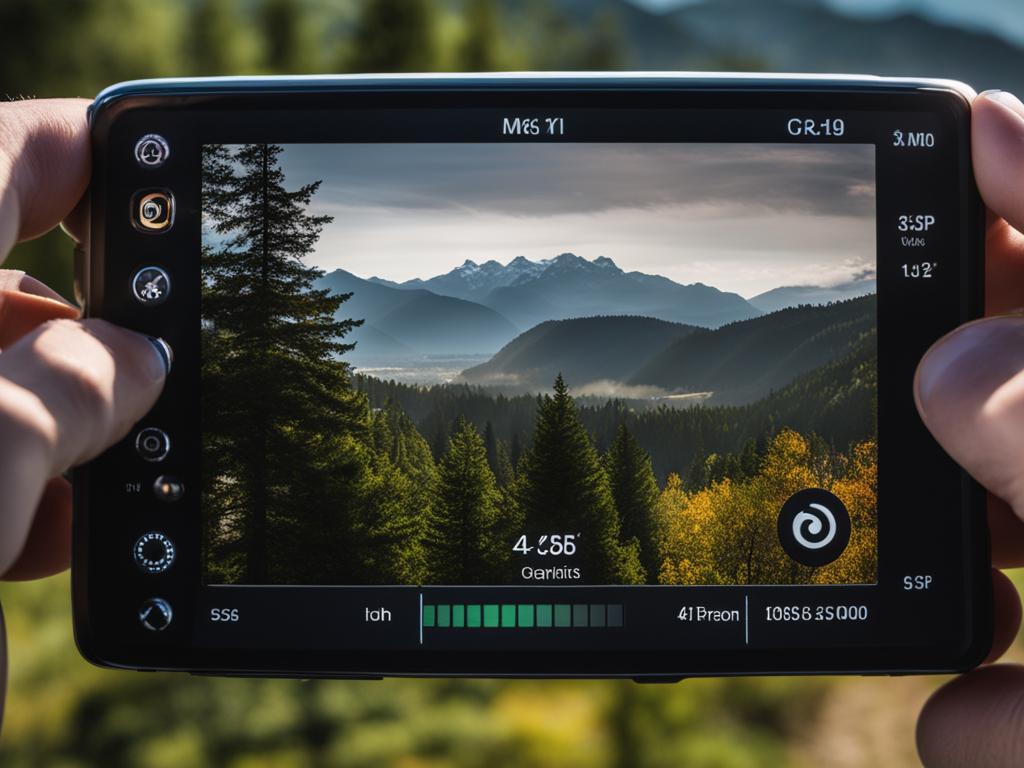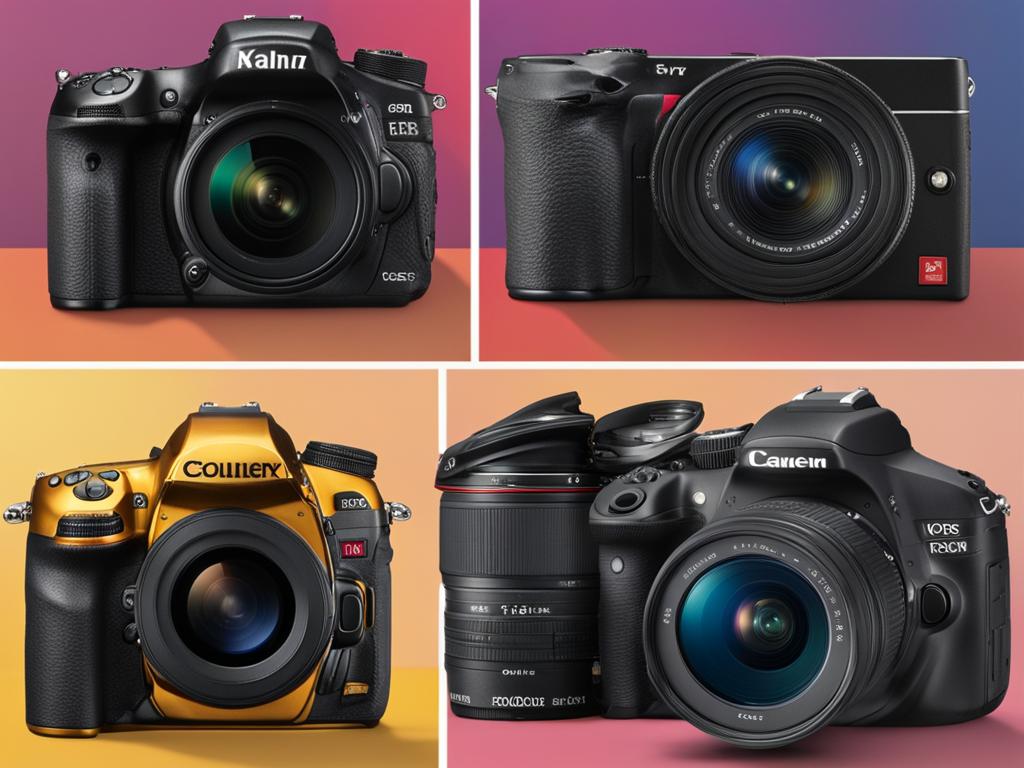Embarking on the art of photography unlocks a world of creative possibility—it’s not just about clicking the shutter but also about capturing moments that tell a story. As a seasoned photographer, I can attest that the key to start in photography lies in fusing passion with practicality. Whether you’re eyeing the potential to publish your work or simply share it on digital platforms, the first steps are essential. With camera in hand, let’s dive into the basics of camera settings for beginners, sift through essential photography equipment for beginners, and explore all the transformative photography tutorials that await.
My journey began with a desire to frame the world through my lens, and it grew into a pursuit filled with learning and community. You, too, can join the ranks of photographers who find joy in every snapshot. As we move forward, I’ll share insights on organizing projects, polishing pre-shoot planning, and developing an anticipation for capturing that perfect shot. All these skills and more transform a budding enthusiast into a compelling visual storyteller. Let’s turn your passion for photography into a pathway for growth, networking, and creative expression.
Key Takeaways
- Begin with understanding camera settings for beginners to take control of your artistic vision.
- Explore various photography tutorials to broaden your scope and refine your skills.
- Invest time in selecting suitable photography equipment for beginners to set a solid foundation.
- Cultivate a network within photography communities for continuous motivation and inspiration.
- Remember, organization and preparation in photography are as critical as the gear you use.
Embracing the Passion and Motivation to Start in Photography
As I embark on the enlightening path of photography, I’ve come to understand that at the heart of this art form lies a blend of passion and motivation. It’s a journey that starts with a spark of inspiration and flourishes through an unwavering drive to capture life’s ephemeral moments and breathtaking sceneries.
Finding Inspiration Through Iconic Photographs and Photographers
My pursuit of photography has often led me to the online galleries of Flickr and 500px, where the masterworks of peers and legends alike fuel my imagination. The profound impact of Ansel Adams’ majestic landscapes and the raw emotional intensity in the portraits by Diane Arbus have driven me to delve deeper into the artistry of photography. It’s in studying these iconic figures and their works that I’ve gained invaluable beginner photography tips and inspiration for my own creations.

Developing the Photographer’s Eye: Composition and Creativity
My journey has taught me that mastering composition in photography is much more than a set of rules; it’s about developing an intuition for balance, harmony, and narrative within a frame. Analyzing how legendary photographers piece together elements within their shots has been a guiding force in shaping my photographic eye, enhancing not only the creativity but the very essence of each photo I take.
Nurturing Your Passion with Continuous Learning and Practice
Photography basics, to me, are not just about the technical know-how; they are the stepping stones to fostering continuous learning and persistent practice. Whether it’s experimenting with new techniques or revisiting concepts, each photograph I take is one more paragraph in the visual story I’m dedicated to sharing with the world. And as I capture each image, I remind myself that the key to growth in this craft is an undying passion and the motivation to keep pressing the shutter.
Photography Basics: Mastering Camera Settings and Techniques
As I delve deeper into the world of photography, I realize that to truly capture the essence of a moment, one must move beyond the simplicity of automatic settings. The journey from a novice to a skilled photographer lies in mastering manual settings that allow for full creative control.
Understanding Your Camera: From Auto to Manual Mode
When I first started with my DSLR, the spectrum of knobs, buttons, and menus seemed daunting. However, through various photography tutorials, I discovered the empowering effect of taking the reins with manual mode. It opens up avenues to adjust the focus, exposure, and balance the light in a scene, far beyond what auto mode could offer. Learning to use manual mode is, to my mind, a turning point in mastering camera settings for beginners.

Exploring Exposure: ISO, Aperture, and Shutter Speed
In photography techniques, exposure is fundamental. The exposure triangle, comprising ISO, aperture, and shutter speed, is a harmony of elements that, when understood, dramatically improves the quality of my photos. I tweak ISO for light sensitivity, adjust aperture for depth of field, and manipulate shutter speed to capture motion—all meticulously balanced to achieve the visual story I aim to tell.
Composition in Photography: Rules and Guidelines for Better Shots
Every tutorial echoes the importance of composition rules such as the rule of thirds and the golden ratio. These are the architectural backbones of good photography—a set of guidelines to structure visual elements in the frame. By consistently applying these rules, my photos have transformed from mere snapshots into compelling images that draw viewers in and guide their gaze.
| Setting | What It Controls | Photography Impact |
|---|---|---|
| ISO | Camera’s sensitivity to light | Adjusts for ambient light, reduces blur in low light |
| Aperture | Size of lens opening | Controls depth of field, influences focus |
| Shutter Speed | Duration of light exposure | Freezes or blurs motion, affects exposure level |
Embarking on these photography tutorials and embracing these camera settings for beginners, I am constantly amazed at the progression of my work. Photography techniques are not just about taking pictures—they’re about creating art and storytelling with light and shadow. The camera is my brush, the settings my palette, and the world my canvas.
Choosing the Right Photography Equipment for Beginners
As I embark on sharing insights into the world of photography, a key aspect that I often emphasize for novices is the critical importance of selecting the right photography equipment for beginners. This decision is not only essential for capturing high-quality images but also fosters a growing affinity for the art. Let’s delve into the primary considerations of camera bodies and lenses to ensure you’re well-equipped to translate your creative visions into breathtaking photographs.
DSLR vs Mirrorless: Deciding Your First Camera

The debate between DSLR and mirrorless cameras for newcomers is ongoing. DSLRs are revered for their proven reliability, optical viewfinders, and extensive lens selections. Meanwhile, mirrorless cameras offer a more contemporary approach with their compact designs, electronic viewfinders, and rapid advancements in technology. The choice ultimately hinges on your priorities, whether it’s the tactile experience of a DSLR or the portability and modern features of a mirrorless model.
Camera Lenses 101: Prime, Zoom, Wide Angle, and Telephoto
Understanding the plethora of camera lenses available can seem daunting. However, it’s imperative to recognize that each lens type serves a unique purpose. A prime lens is renowned for its fixed focal length and sharpness, while a zoom lens provides versatility with variable focal lengths. For expansive landscapes, a wide-angle lens is indispensable, whereas a telephoto lens is ideal for bringing distant subjects closer. Below is a breakdown of these lenses and their typical use-cases to help inform your choices.
| Lens Type | Key Feature | Common Usage |
|---|---|---|
| Prime | Sharpness and large aperture | Portraits and low-light scenarios |
| Zoom | Flexibility with varying focal lengths | Events and subjects with variable distance |
| Wide Angle | Broad field of view | Landscapes and architectural photography |
| Telephoto | Long reach and magnification | Sports, wildlife, and distant subjects |
With these foundational tools, your foray into photography awaits. Keep in mind that while the DSLR and mirrorless cameras, along with camera lenses, constitute the core of your gear, the exploration doesn’t end here. An array of accessories awaits to elevate your craft further. So, arm yourself with knowledge, and let your creative journey commence!
Start in Photography: The Practical Guide for Beginners
Embarking on a photographic journey involves not only capturing images but also mastering the art of transforming them into impactful visual statements. As I’ve progressed in my own photography ventures, I’ve come to realize the significance of effective post-processing. It’s an empowering step in the creation process that enables photographers, especially beginners, to infuse their unique style into each image. Let’s dive into the basics of photo editing and how tools like Adobe Lightroom and Photoshop serve as the backbone for enhancing your photographs.
Getting Started with Adobe Lightroom and Photoshop
Adobe Lightroom is the go-to starting point for editing photos for beginners. Its user-friendly interface simplifies the organization of your photos, making it easy to manage even extensive libraries. Lightroom’s introductory editing features let you adjust exposure, contrast, and color with sliders that yield instant, visually satisfying results. After grasping Lightroom’s basics, incorporating Photoshop into your workflow unlocks a world of advanced editing possibilities. Adjust layers, apply complex effects, and perfect your images down to the finest detail—Photoshop allows you to let your creativity run wild, crafting images that truly stand out.
Photo Editing Techniques to Enhance Your Images
While equipment and shooting techniques are fundamental to photography, post-processing is where the magic happens for your captured moments. From adjusting white balance to playing with hues, photo editing techniques put a powerful finishing touch on your work. Mastering tools like spot removal, selective adjustments, and sharpening are essential skills I’ve honed to ensure my images convey the intended mood and message. Both Lightroom and Photoshop are vast realms of potential that, when explored, can dramatically uplift the quality of your photography, helping you shift from a beginner to a visually articulate storyteller.
FAQ
How do I start in photography as a complete beginner?
To start in photography, begin by learning photography basics through photography tutorials and familiarize yourself with camera settings for beginners. Practice with what equipment you have and gradually invest in suitable photography equipment for beginners as you advance.
Where can I find inspiration to fuel my passion for photography?
Inspiration can be found by examining iconic photographs and studying the work of influential photographers. Develop your eye by understanding composition in photography and seeking beginner photography tips that enhance creativity.
What is the best way to master my camera’s settings?
The best way to master your camera settings is to start by switching from auto to manual mode. Learn the exposure triangle consisting of ISO, aperture, and shutter speed through photography tutorials, and apply these techniques to incrementally improve your control over the images you capture.
When should I consider upgrading my camera equipment?
Consider upgrading your camera equipment when you feel limited by your current gear in achieving your photographic vision. Understand the differences between DSLR and mirrorless cameras as well as the various camera lenses options before making the investment.
How important is post-processing in photography for beginners?
Post-processing is a vital step in photography, even for beginners. It can transform your images from good to great. Start with user-friendly programs like Adobe Lightroom for organization and basic edits, and learn Photoshop for more intricate editing work. Photo editing techniques will greatly enhance the quality of your photographs.
What are the basic rules of composition in photography?
Basic rules of composition in photography include the rule of thirds, leading lines, symmetry, and the golden ratio, which help guide the placement of elements within the frame to create a balanced and engaging image. Mastering these rules can significantly elevate the visual impact of your photos.
Is it worth learning manual camera settings, or can I just use automatic modes?
It’s absolutely worth learning manual camera settings because it provides you with complete creative control over your photography. While automatic modes can yield good results, manual settings allow you to take charge of the exposure and depth of field, enabling you to capture images that precisely align with your visionary intent.
Can I take good pictures with an entry-level camera?
Yes, you can take good pictures with an entry-level camera. The photographer’s skill and understanding of composition, lighting, and technique are often more important than the gear itself. Many professional photographers have created stunning work with basic equipment.
What are the essentials of a beginner’s photography kit?
A beginner’s photography kit should include a reliable camera—either a DSLR or mirrorless, at least one good-quality lens, a sturdy tripod, spare batteries, memory cards, and a camera bag. As you grow, you can add more lenses and other accessories like filters and external flashes to your kit.
How often should I practice photography to see improvement?
Frequent practice is key to improvement in photography. Aim to shoot as often as you can, whether it’s daily or several times a week. Regularly reviewing your work and learning from your mistakes will also help accelerate your development as a photographer.


